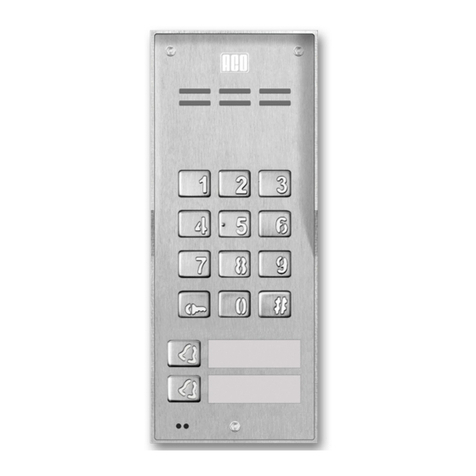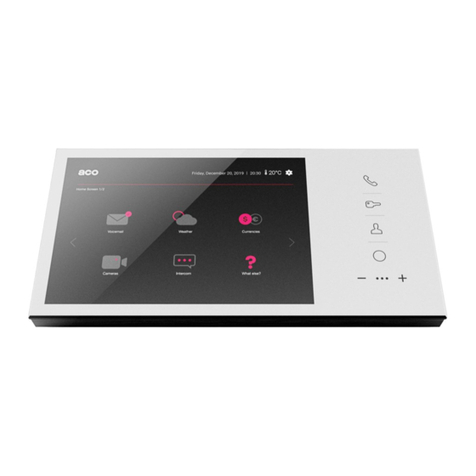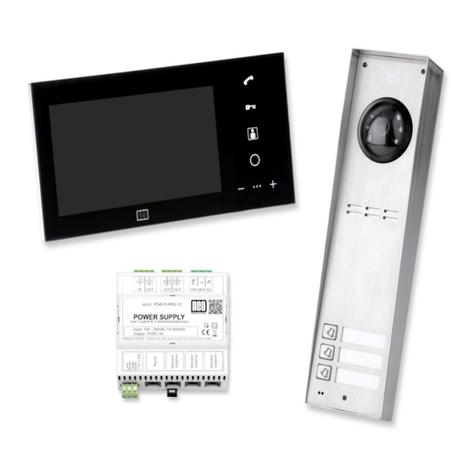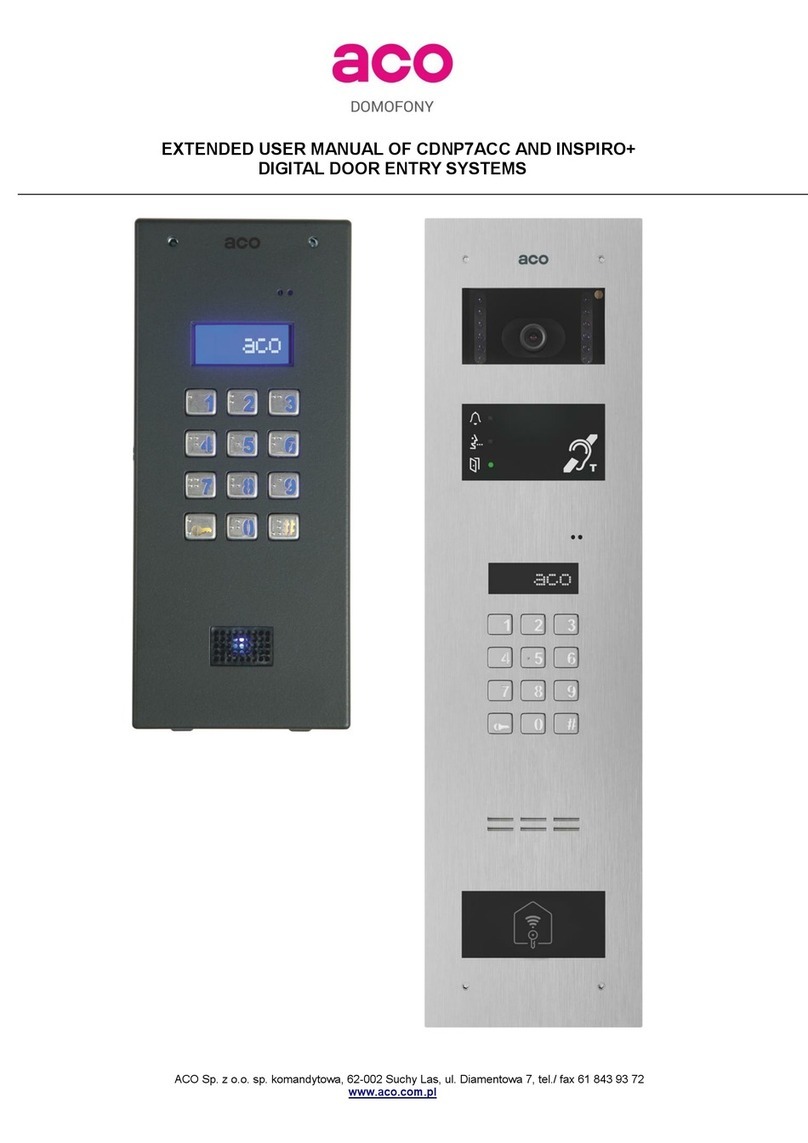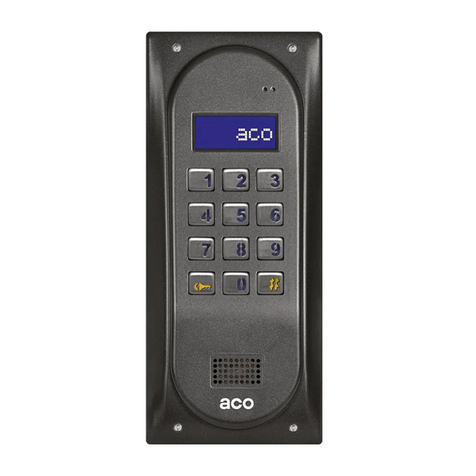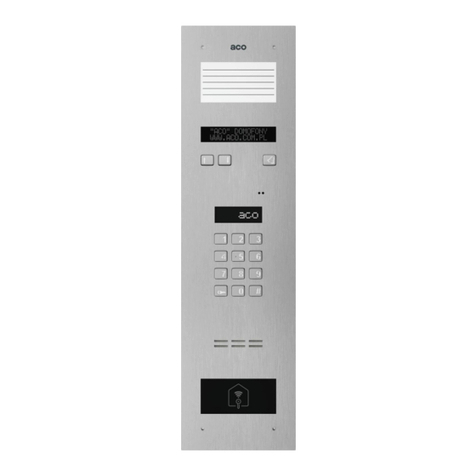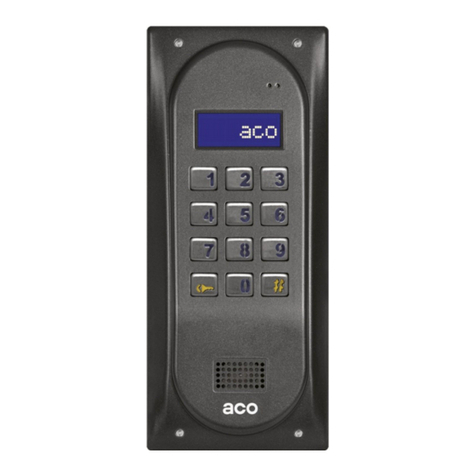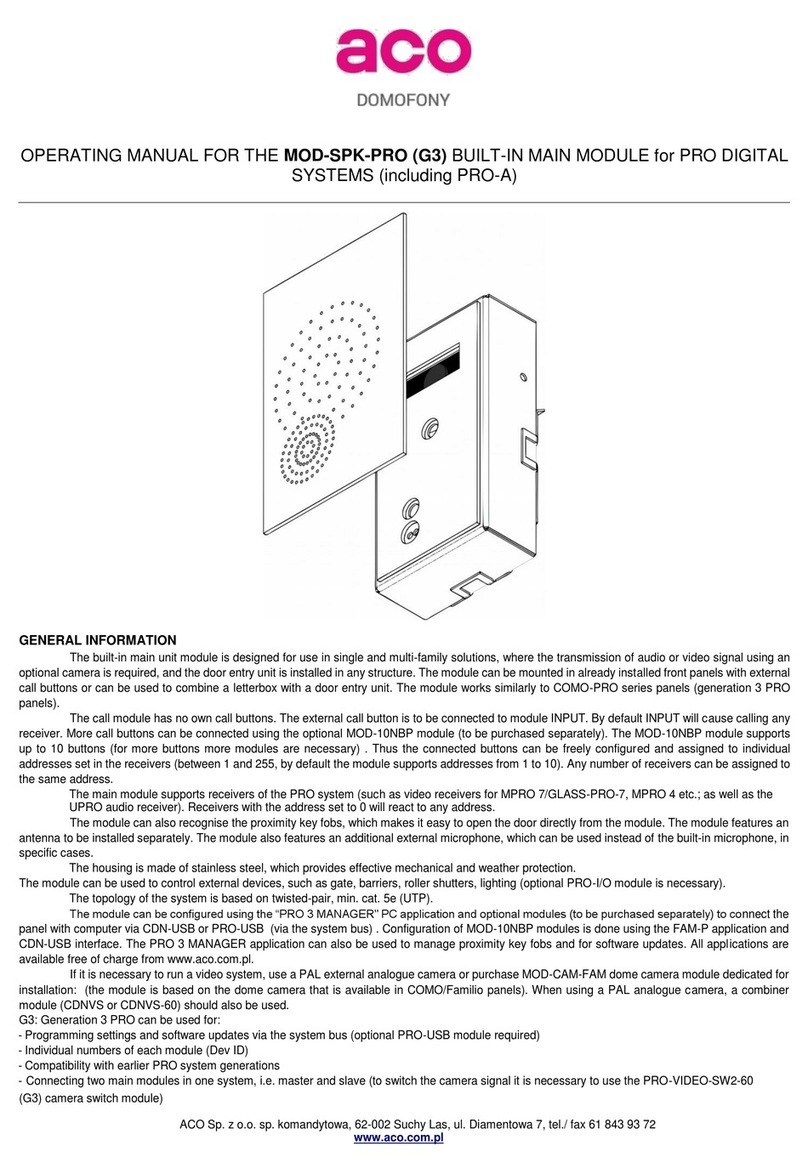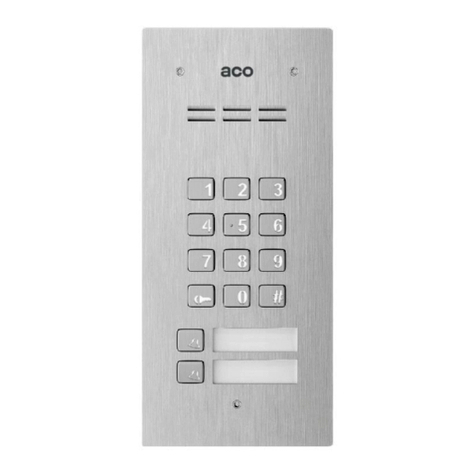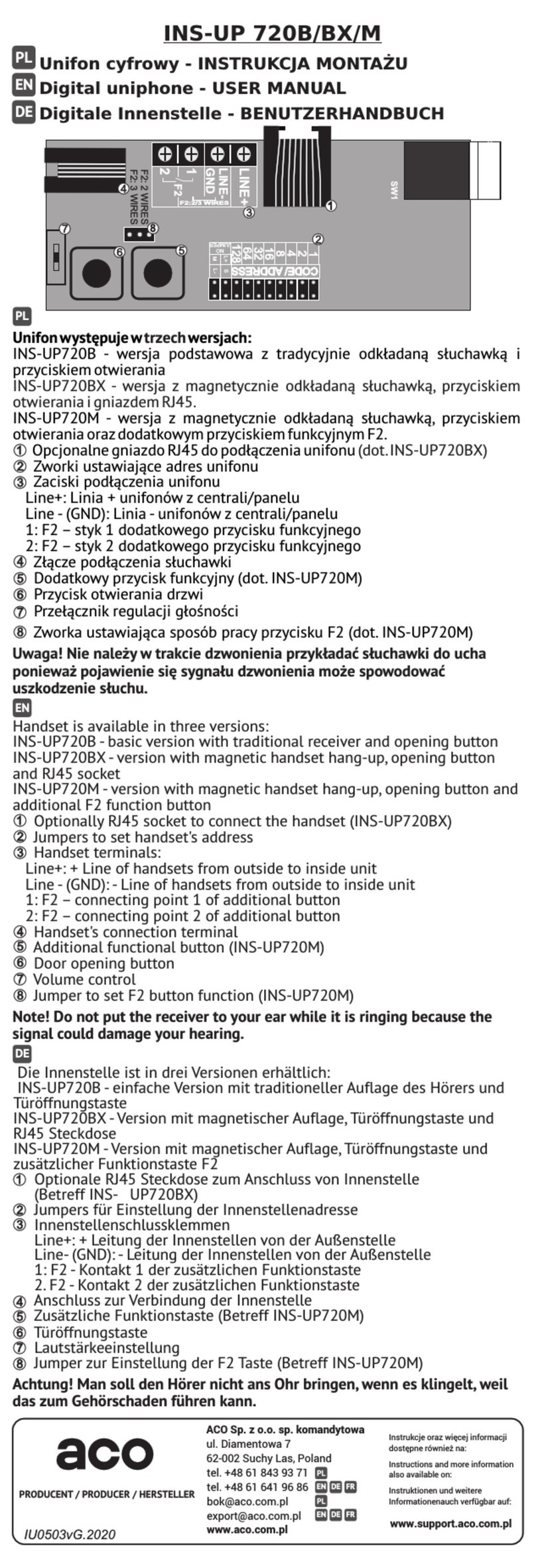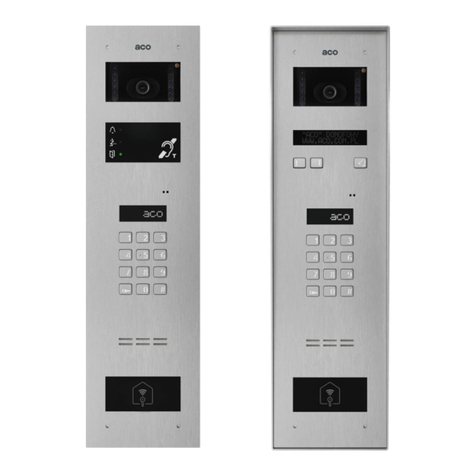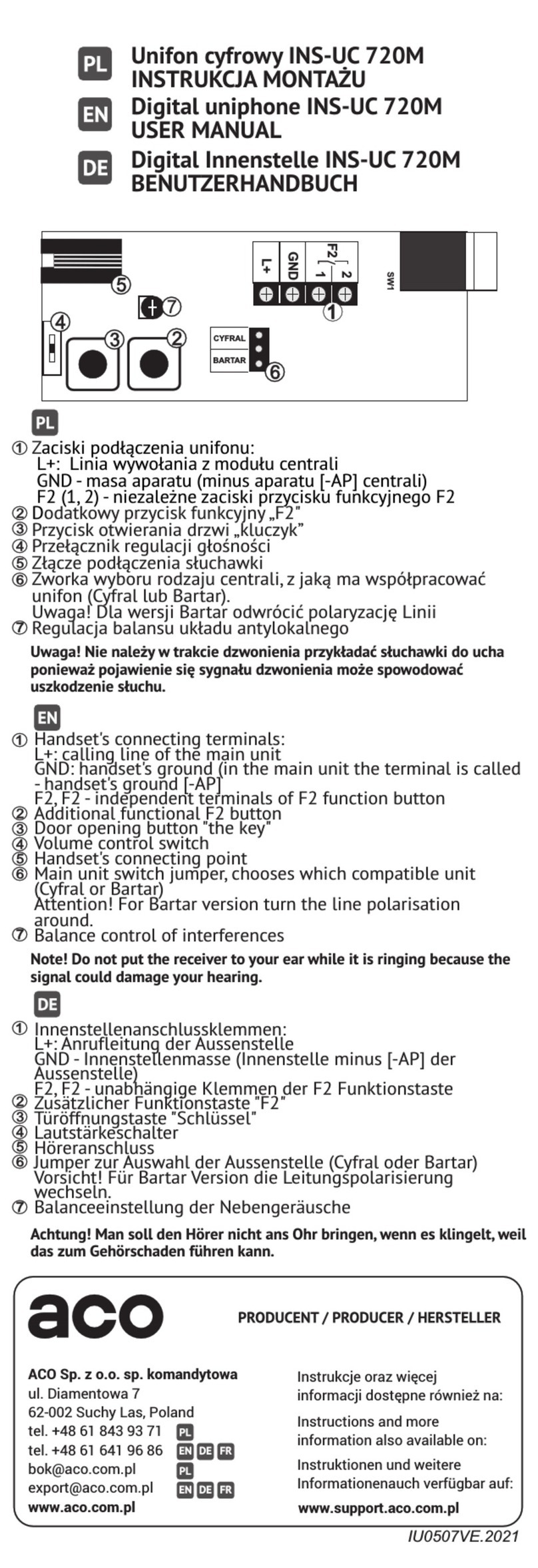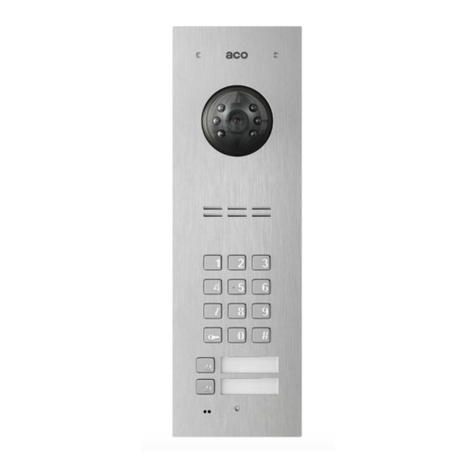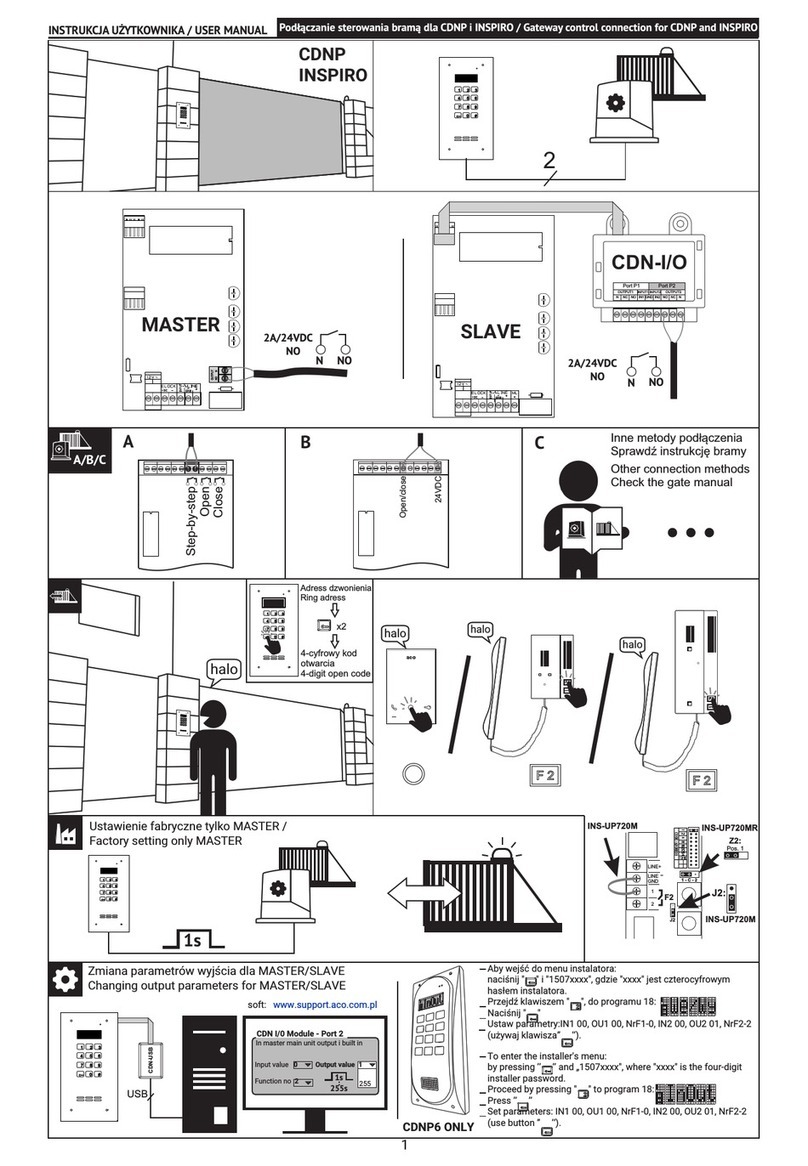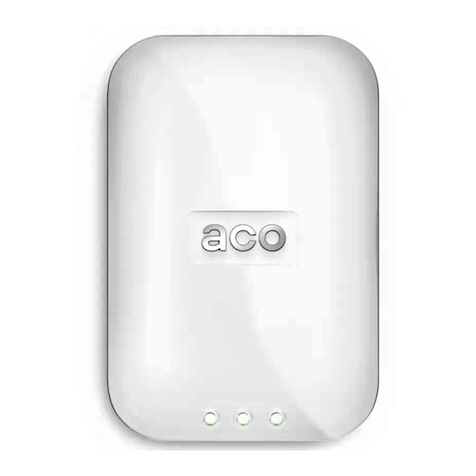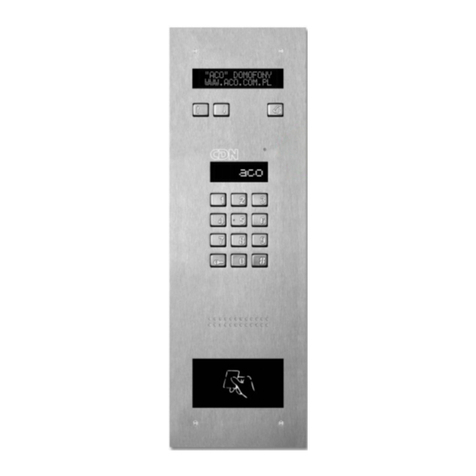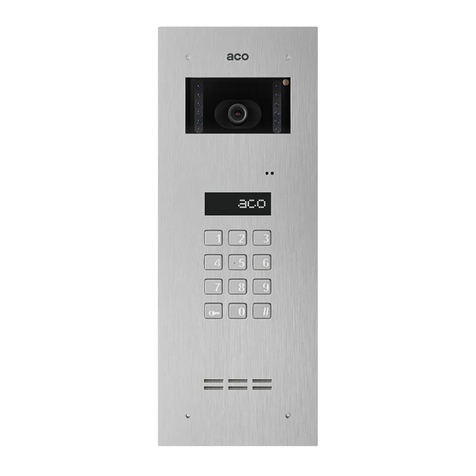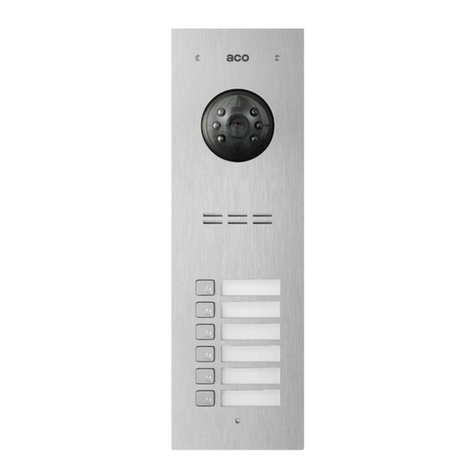RULES FOR STORAGE OF USED ELECTRICAL E UIPMENT
The used electrical equipment may not be stored together with other waste. Store it at sites intended for this purpose.
For this purpose, address the responsible institutions or companies dealing with waste recycling. - Directive
2002/96/EC/ dated January 27th, 2003
INSTALLATION OF THE DOORPHONE PANEL
The panel should be mounted on the wall of the building (entrance enclosure,vestibule, covered
wall, east wall etc.) so as to minimise the impact of unfavourableatmospheric conditions. We
recommend mounting the panel at the heigh of approx. 1.35m. The sheet metal of the base for
surface installation of the panel should bemounted to the surface using expansion bolts or
appropriate screws. The frame ofthe concealed installation of the panel should be mounted using
expansion bolts and gypsum in the wall opening. The wires need to be pulled through the openings
in the base.NOTE! To ensure correct functioning as well as the safety of use, the panel (in a metal
frame) must be connected at the installation site tothe earthing, connecting the earth terminal on
the body with the appropriateprotective installation (PE).It is recommended to provide the
connection between the panel and the electrical door strike and the power supply transformer
using a wire of 1 mm2 in diameter ( e.g. Y1,0). The length of the wire should not exceed 7m in the
case of an electrical door strike circuitand 15 m in the case of the power supply circuit! In the case
of smaller diameters and too long connections, voltage drops may occur during opening of the
electrical door lock, causing interferences in the operation of the panel or activation of reset
function and restart of the unit, especially during opening procedure. Supply voltage 11,5V AC
should be connected to the main panel's 12V~ clamps. In case you are using 15V DC connect the
voltaeg to the clamps +DC (+E OCK) and GND ( INE-). For video systems use only direct current
power supply 15V DC and connect it to the combiner’s terminals. E-lock without estimated
polarisation connects freely to „E OCK” clamps. When using reverse e-lock put jumper Z13 (under
resistor on the left side of the pcb)!If you work with reverse elock there will be supply voltage at
“E OCK” terminal and use appropriate reverse elock type compatible with the provided voltage.
You can also use MOD-DC-12V module which will supply 12VDC to the reverse elock if you are
using 15VDC power supply or transformer.
Additional relay output "OUTPUT" (only Master) can be used to control, for example, another gate
(factory setting) by means of a code (with "double key") and handset’s F2 button. Operation time
and functions of the "OUTPUT" can be changed in program 18, port 2 (in the same way as the
CND-I / O module).
All connections in the installation must be soldered!
The following wires should be connected to the installation:
•2 wires x 1mm2 - transformer power supply,
•2 wires x 1mm2 - for the electric door strike,
•2 wires x 0,5mm panel wire to connect the uniphones.
•1 yellow-green insulated wire - to connect the panel housing earthing
SINGLE CDNP OUTSIDE UNIT WIRING DIAGRAM
